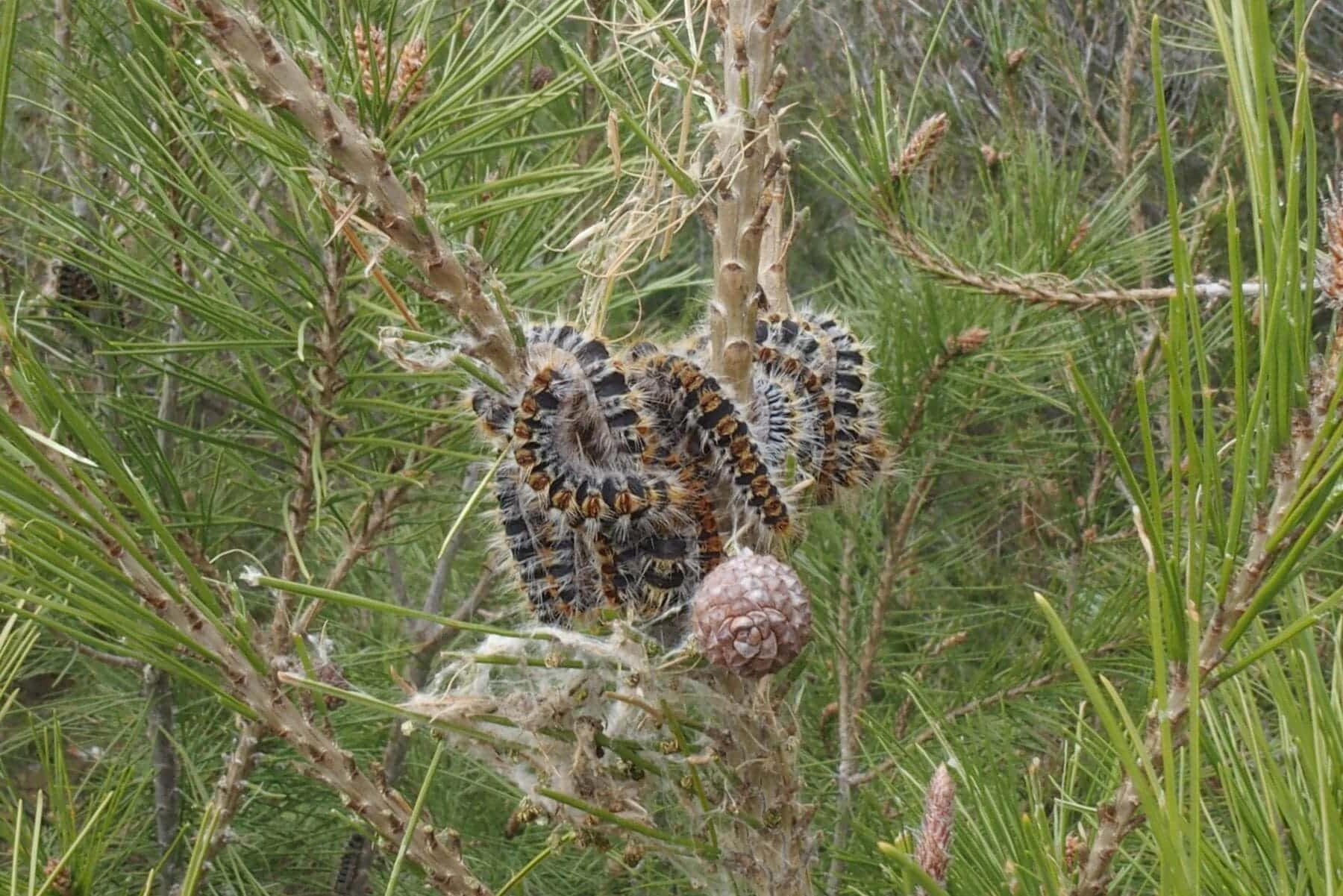The Pino Processionary is the most important scourge of Mediterranean pine forests. It is a lepidopter that can be over the peninsula in Spain, as well as on the Balearic Islands; It attacks the ceders and all types of pine trees, both native and foreign.
The weather plays a fundamental role in the spread of this plague, because in the areas where temperatures reach very low values (-12 ºC or less), the contamination and distribution are delayed. The same happens in Regions with high rainfall, because this hinders reproduction.
Processions in Navarra
Environment has one Increased incidence of pine processionA plague that generates discomfort and damage from different degrees with the users of forest spaces, although in general it does not endanger the stability of the attacked pine forests.
Technical and environmental children and public society start in January every year Processional contamination Evaluation works in Los Pinares de Navarraso that estimating the degree of damage that must be produced. This year they have appreciated a significant increase in previous years, especially in the environment closest to the Pamplona basin and the middle zone.
According to technical staff, these Oscillations are cyclical at the processing level and are related to unfavorable weather conditions and their balance with their natural enemiesAnd given that there have been no particularly unfavorable weather conditions for processing this year and that the previous year a level of infection in historical minima was reached, this increase comes within the expected.
In general, The pine processionary does not endanger the stability of the attacked pine treesBecause the loss of acicles reduces the ability of photosynthesis of the tree, but usually not causing their death by not influencing the yolks that make the development of spring outbreaks possible.
In a survival strategy developed after thousands of years of coexistence between caterpillar and pines, The damage is limited to old acicles and trees can restore naturally After a while you restore your foliage and growth. Direct death as a result of the Procession is therefore very low.
Traditionally, general air treatments were performed on the pine forests, but since 2012 Navarra has been throwing this practice away, give priority to creating more complex masses that are able to receive the many predators and parasitoids that the Pine Processionary owns. The placement of nest boxes in different pine forests in Navarra promotes the expansion of natural predators such as insect -eating birds and bats.
However, when we talk about pine equipment in public use rooms (parks and gardens, educational, hospitable, geriatric environments, etc.), it is advisable to users advisable problems. This Treatments must be performed before the tree caterpillars descendEliminating the process of processions. In isolated trees or small groups, they are also useful and increasingly occur, the collar type fains that prevent the arrival to the ground of the caterpillars.
How can I avoid skin reactions?
Weld Have stabbing caterpillars that can cause various allergic reactions, whose severity depends on the sensitivity of each person, from light skin conditions to breathing problems. This is done in the trees of the origin process, prior to the funeral of Rupsen. What needs to be done to prevent allergic reactions is not to touch them or to approach them exaggerated. The prevention of companion animals is also the best way to prevent damage.
In Case of walking or driving by bike, it is recommended to wear clothes that cover neck, arms and legs. PET disorders, in the most serious cases, assume inflammation with necrosis and/or drowning the animal as different copies. That is why wearing them tied is the best way to protect them.
What is the biological cycle of the procession?
The pine test (Thaumetopoea Pityocampa Shiff) It is a native type of lepidopter that has a reverse distribution, from Greece to Portugal, Morocco or Tunisia. In the north it reaches cities such as Paris or areas of the Swiss Alps, a consequence of the accelerated temperatures of the last decades due to global warming.
In Navarra it can be found in Almost all pine forests (Pino Laricio, in Pamplona Basin and Middle Zone; Carrasco Pine in the middle zone and riverbank; wild pines in pre -Pyrenees and Pyrenees)Although the presence in valleys such as Salazar or Roncal / Eronkari has been historically very low.
Loose Butterflies -shaped adult individuals are muddy since the start of the summer. They have half a life of a day on which they look away and choose where they perform the 200 eggs. After a month, the larvae that feed on pine acicles start and occasional ceders.
They have a social and gregarious behavior that they maintain throughout their lives. They feed at night and seek refuge in daily nests. When the cold arrives, they lower more robust sides, which are located in the sunny and raised part of the tree, a tree that will not leave, except that they do not miss food. In the final phase, the caterpillars are very visally and can disembarking entire trees.
The low temperatures and long periods of autumn and winter rains determine the natural death of the caterpillars next to the available food. Another factor, less studied, is the Excessive summer heat at the time of institution, which also seems to influence mortality And the population cycles of the species.
The caterpillars that complete their development, They will descend from the tree to start the processions (usually from the beginning of February to the end of March, in moderate stations), at what time they are buried and student. This moment is when they are more visible and dangerous. Once the caterpillars are buried, they will no longer go outside until they complete their transformation in butterflies, rise in the summer to complete a new biological cycle.

